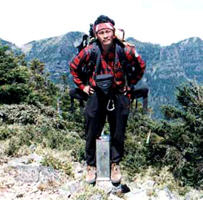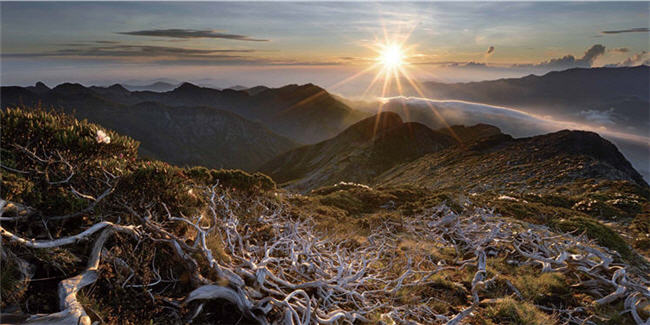
Though an aborigine in Taiwan, Jian-xiang Gao had moved to the city since he was 10. He never got the chance to know about the mountains and forests he once lived in, except for some childhood memories of the snow-capped peaks of Syue Mountain and the colorful blossoms of rhododendrons his grandfather taught him to identify. That’s when the beauty and mystery of mountains made an imprint on Gao’s mind.
Early in his adulthood, Gao started his military career, and studied meteorology in the navy, where he was mentored by some of the most distinguished meteorologists in the country. After his retirement from the military, he worked for a tile company with a great salary and welfares. But out of his longing for a life in the mountains, he found a position in the Kuomintang(KMT)’s Lishan party headquarters, and later became a ranger in Shei-Pa National Park (SPNP), which only entered its third year at the time.
This “homecoming” came 40 years late, but theaboriginal instincts about mountains embedded in his blood were soon awakened.
For Gao, deep in the mountains, all the high-tech gadgets like GPS or computers are only supplements to his rich knowledge and experiences accumulated through each and every patrol and rescue mission. Syue Mountain area is just like his own back yard that he couldn’t be more familiar with. He once helped some female hikers lost in the mountains find their way out by guiding them over the phone with only some vague description on the surroundings provided by the hikers. He also made it easier, through his guidance on directions, for the National Communications Commission (NCC) to finish their investigation on the communications coverage for shortening the positioning time in rescue works.
But Gao is not always that almighty in every rescue mission given the broad range of the mountains. “Till today, I still remember the names of those missing but never found, and I’ll never forget the face of a boy among them,” Gao grieved over a lost life in a failed mission. “I saw the boy at 369 Cabin the night before he went missing, but I just couldn’t find him anymore since then, not even when we spent almost 20 days with little rest and went through every intersection or corner we could think of.” Unfortunately, the boy was still gone forever in the wintery mountain as well as in the tearful eyes of his parents.
Interview & Text/ Jun-pei Xia
Translator/ Kuan-yu Ou
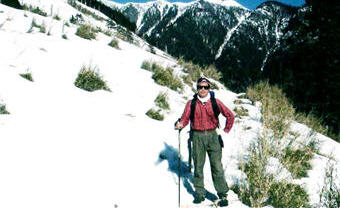
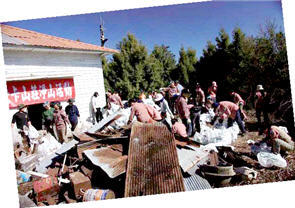
Gao has still been in contact with the family of some of the missing hikers. They would still ask him on the phone with a glimmer of hope whether there’s any news about their loved ones. With a sad but solemn tone, Gao cites “being left behind alone” as the most common reason for missing incidents. It happens due to a lack of vigilance of those getting lost and the negligence of the leaders of their teams. In the forest, Gao reminds, places just 10 or 20 meters apart would look very different, which would make stray hikers turn nervous and lose their judgment. So all hikers, however experienced, must take into account their physical strength and weather conditions, act in groups, register before entry, stick to the originally planned routes, and never take shortcuts.
These precautions will ensure hikers’ safety or facilitate the rescue work to prevent tragedies from happening.
The major responsibilities of a national park ranger include not just rescuing hikers but also cleaning up the mountains, the first challenge faced by SPNP Headquarters since its founding. Back then when the Taiwanese were not well educated about environmental protection, all kinds of trash had been littered in the mountains, and it took nearly 5 years for the park rangers to pick up and remove dozens of tons of garbage and recover what the park originally looked like.
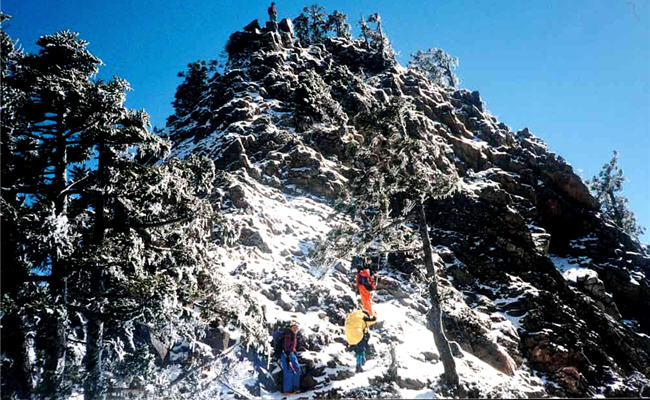
Therefore, Gao has been strict about maintaining a clean environment in the park. He’d always pay attention to whether hikers and tourists bring their garbage with them when leaving, and question them when the amount of trash is unreasonably little. His firm attitude leads to arguments sometimes but reflects his determination to protect and preserve the mountains and forests.
As a park ranger, Gao also needs to do regular patrols and conservation patrols, maintain the trail facilities, train for survival skills in the wild and rescue techniques in the snow or in the river, manage the entries and exits of hikers, make sure the mountain cabins are in working condition, and take care of protected wildlife in the mountains. It’s such a demanding job that the heavy workload is beyond imagination. But the park rangers are like the guardian angels of the national parks. Although their existence is barely felt by people, but their contributions are truly indispensible to the national parks.
Gao has now been fully devoted to the mountains and forests, an integral part of his life, without caring about how he is paid. However, in fact, it takes 3 to 5 or more years of field experience and the guidance of senior rangers to train a qualified ranger, while the salary and welfares of a park ranger have been barely satisfactory. All these have made the job as a ranger an unattractive one, which will eventually pose a threat to national parks.
By pointing out the value and importance of park rangers, Gao hopes more efforts can be made to improve the terms of employment and training of park rangers.
Gao has now been fully devoted to the mountains and forests, an integral part of his life, without caring about how he is paid. However, in fact, it takes 3 to 5 or more years of field experience and the guidance of senior rangers to train a qualified ranger, while the salary and welfares of a park ranger have been barely satisfactory. All these have made the job as a ranger an unattractive one, which will eventually pose a threat to national parks. By pointing out the value and importance of park rangers, Gao hopes more efforts can be made to improve the terms of employment and training of park rangers.
“Even after I retire from the park someday, I’ll still stay as a volunteer for interpretation and high-mountain guide services. I’d also like to lead more aborigines nearby to know about the national park.” Gao’s passion and commitment to the mountains have well compensated for his belated engagement in conservation by 40 years. For him, it’s a lifelong career to protect the land that he’d love forever.
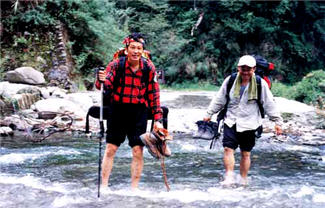
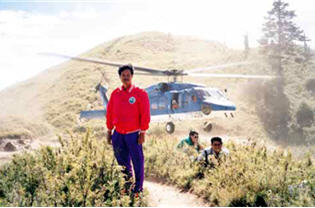

Currently a ranger in Shei-Pa National Park, Gao is an Atayal aborigine comes from Lishan tribes. After graduated from Naval Academy, he has worked as a weather forecaster and has worked for a tile company. He quitted the job in the cities when he was near forty, and went straight to the mountains. The area he is familiar with includes Wuling mountains, Syue Mountain Range, Dajian, Xiaojian Mountain, Holy ridgeline, etc. Due to his work demands and his personal interests, he has climbed to the top of Syue Mountain more than two hundred times.
